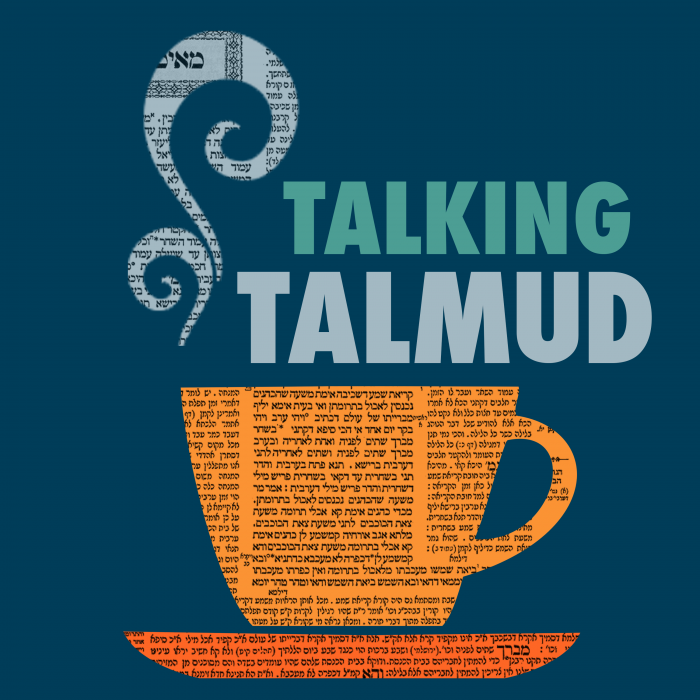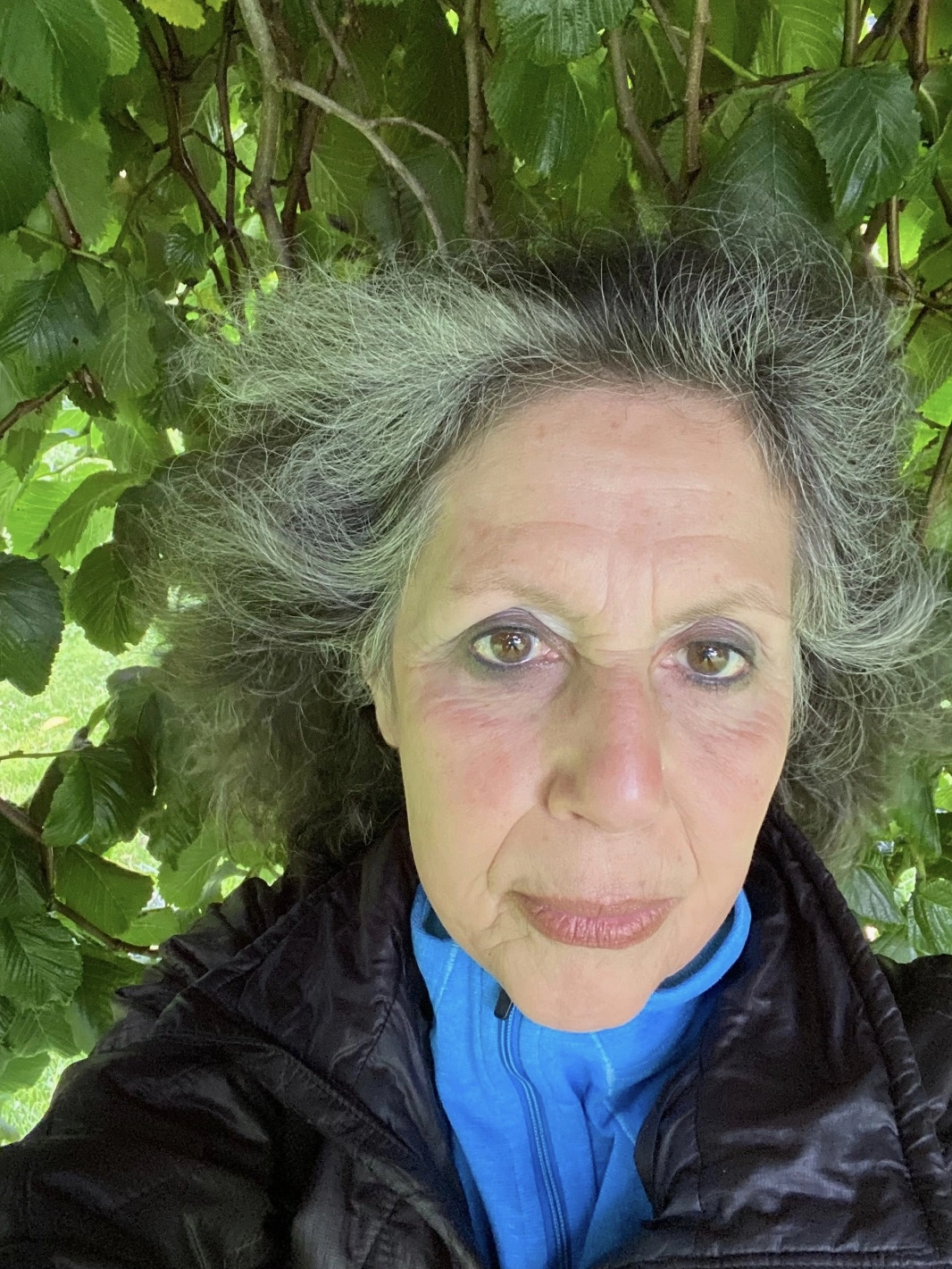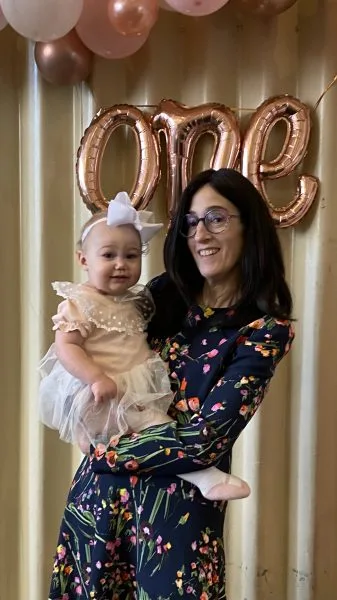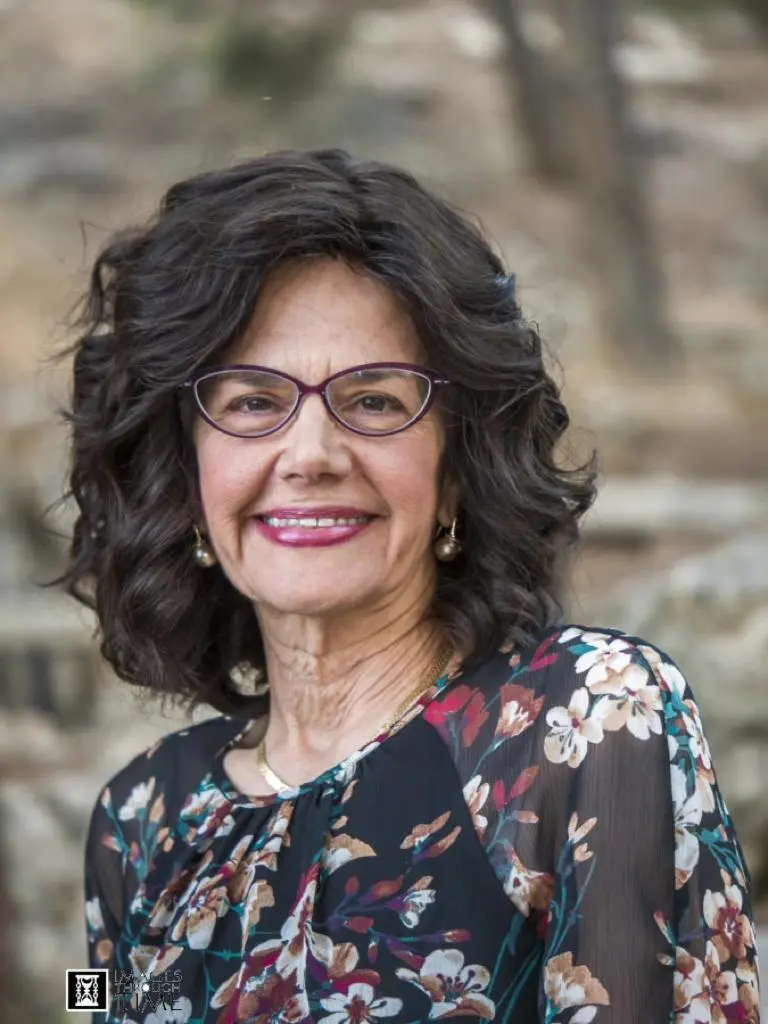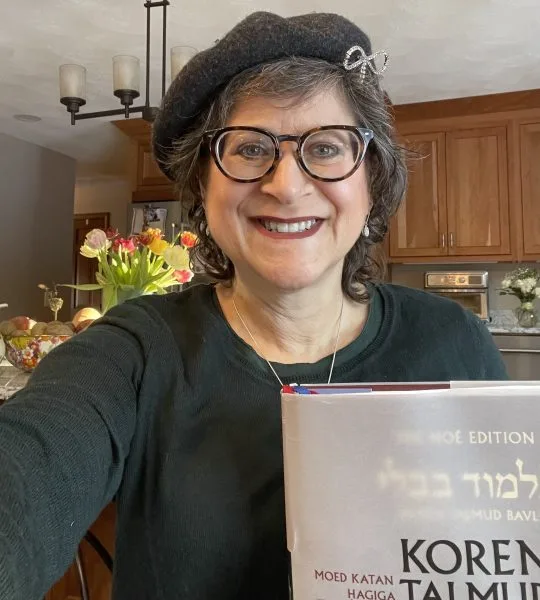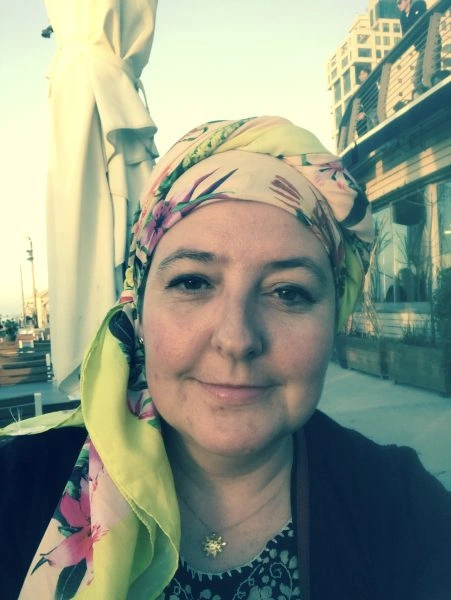Bava Batra 160
גֵּט פָּשׁוּט – עֵדָיו מִתּוֹכוֹ. מְקוּשָּׁר – עֵדָיו מֵאֲחוֹרָיו.
MISHNA: In an ordinary document, its witnesses are to sign inside it, i.e., on the written side of the paper. In a folded and tied document, its witnesses are to sign on the back of it.
פָּשׁוּט – שֶׁכָּתְבוּ עֵדָיו מֵאֲחוֹרָיו, מְקוּשָּׁר – שֶׁכָּתְבוּ עֵדָיו מִתּוֹכוֹ, שְׁנֵיהֶם פְּסוּלִין. רַבִּי חֲנִינָא בֶּן גַּמְלִיאֵל אוֹמֵר: מְקוּשָּׁר שֶׁכָּתְבוּ עֵדָיו מִתּוֹכוֹ – כָּשֵׁר, מִפְּנֵי שֶׁיָּכוֹל לַעֲשׂוֹתוֹ פָּשׁוּט. רַבָּן שִׁמְעוֹן בֶּן גַּמְלִיאֵל אוֹמֵר: הַכֹּל כְּמִנְהַג הַמְּדִינָה.
With regard to an ordinary document whose witnesses wrote their signatures on the back of it, and a tied document whose witnesses wrote their signatures inside of it, both of these are not valid. Rabbi Ḥanina ben Gamliel says: A tied document whose witnesses wrote their signatures inside of it is valid, because one can transform it into an ordinary document by untying it. Rabban Shimon ben Gamliel says: Everything is in accordance with regional custom.
גֵּט פָּשׁוּט – עֵדָיו בִּשְׁנַיִם, וּמְקוּשָּׁר – בִּשְׁלֹשָׁה. פָּשׁוּט שֶׁכָּתַב בּוֹ עֵד אֶחָד, וּמְקוּשָּׁר שֶׁכָּתַב בּוֹ שְׁנֵי עֵדִים – שְׁנֵיהֶם פְּסוּלִין.
An ordinary document is rendered valid by its having at least two witnesses, and a tied document is rendered valid by its having at least three witnesses. With regard to an ordinary document in which a single witness wrote his signature, and a tied document in which only two witnesses wrote their signatures, they are both not valid.
גְּמָ׳ מְנָהָנֵי מִילֵּי? אָמַר רַבִּי חֲנִינָא, דְּאָמַר קְרָא: ״שָׂדוֹת בַּכֶּסֶף יִקְנוּ, וְכָתוֹב בַּסֵּפֶר וְחָתוֹם, וְהָעֵד עֵדִים״. ״שָׂדוֹת בַּכֶּסֶף יִקְנוּ וְכָתוֹב בַּסֵּפֶר״ –
GEMARA: The Gemara asks: From where are these matters derived? What biblical basis is there for the existence of these two types of documents? Rabbi Ḥanina says: As the verse states: “They shall buy fields for money, and subscribe the deeds, and seal them, and call witnesses” (Jeremiah 32:44). When the verse states: “They shall buy fields for money, and subscribe the deeds,”
זֶה פָּשׁוּט. ״וְחָתוֹם״ – זֶה מְקוּשָּׁר. ״וְהָעֵד״ – שְׁנַיִם, ״עֵדִים״ – שְׁלֹשָׁה. הָא כֵּיצַד? שְׁנַיִם לְפָשׁוּט, שְׁלֹשָׁה לִמְקוּשָּׁר.
this is referring to an ordinary document. When the verse states: “And seal them,” this is referring to a tied document. The next phrase, “and call witnesses [veha’ed edim],” which more literally would be translated: And have witnesses bear witness, is interpreted as follows: “And have bear witness [veha’ed],” this indicates the need for two witnesses, as the term “witness [ed]” in the Torah generally refers to two witnesses. As to the word “witnesses [edim],” this additional term indicates the need for three witnesses. How so? How can the verse call for both two witnesses and three witnesses? Rabbi Ḥanina explains: Two witnesses are required for an ordinary document, and three are required for a tied document.
וְאֵיפוֹךְ אֲנָא! מִתּוֹךְ שֶׁנִּתְרַבָּה בִּקְשָׁרָיו, נִתְרַבָּה בְּעֵדָיו.
The Gemara questions this explanation: But I can just as well reverse it, requiring two witnesses for a tied document and three for an ordinary one. The Gemara answers: Since the tied document requires more to be done with regard to its ties, it stands to reason that it requires more to be done with regard to its witnesses, requiring three rather than two.
רַפְרָם אָמַר, מֵהָכָא: ״וָאֶקַּח אֶת סֵפֶר הַמִּקְנָה, אֶת הֶחָתוּם הַמִּצְוָה וְהַחֻקִּים, וְאֶת הַגָּלוּי״; ״וָאֶקַּח אֶת סֵפֶר הַמִּקְנָה״ – זֶה פָּשׁוּט. ״אֶת הֶחָתוּם״ – זֶה מְקוּשָּׁר. ״וְאֶת הַגָּלוּי״ – זֶה פָּשׁוּט שֶׁבַּמְקוּשָּׁר.
Rafram says that there is a different source for two kinds of documents, from here: “So I took the deed of the purchase, that which was sealed, the terms and conditions, and that which was open” (Jeremiah 32:11). When the verse states: “So I took the deed of the purchase,” this is referring to an ordinary document. When it states: “That which was sealed,” this is referring to a tied document. When it states: “And that which was open,” this is referring to the ordinary, unfolded part of a tied document.
״הַמִּצְוָה וְהַחֻקִּים״ – אֵלּוּ דְּבָרִים שֶׁבֵּין פָּשׁוּט לִמְקוּשָּׁר. הָא כֵּיצַד? זֶה עֵדָיו שְׁנַיִם, וְזֶה עֵדָיו שְׁלֹשָׁה; זֶה עֵדָיו מִתּוֹכוֹ, וְזֶה עֵדָיו מֵאֲחוֹרָיו.
Rafram continues: With regard to the phrase: “The terms and conditions,” these are the matters that distinguish an ordinary document from a tied one. How so? What are the details that differentiate the two types of documents? This one, the ordinary document, has two witnesses, and that one, the tied document, has three witnesses. And in this one, the ordinary document, its witnesses are signed inside it, on the front side, while in that one, the tied document, its witnesses are signed on the back of it.
וְאֵיפוֹךְ אֲנָא! מִתּוֹךְ שֶׁנִּתְרַבָּה בִּקְשָׁרָיו, נִתְרַבָּה בְּעֵדָיו.
The Gemara questions this explanation: But I can just as well reverse it, requiring two witnesses for a tied document and three for an ordinary one. The Gemara answers: Since the tied document requires more to be done with regard to its ties, it stands to reason that it requires more to be done with regard to its witnesses, requiring three rather than two.
רָמֵי בַּר יְחֶזְקֵאל אָמַר, מֵהָכָא: ״עַל פִּי שְׁנַיִם עֵדִים אוֹ עַל פִּי שְׁלֹשָׁה עֵדִים יָקוּם דָּבָר״ – אִם תִּתְקַיֵּים עֵדוּתָן בִּשְׁנַיִם, לָמָּה פָּרַט לָךְ בִּשְׁלֹשָׁה? לוֹמַר לָךְ: שְׁנַיִם לְפָשׁוּט, שְׁלֹשָׁה לִמְקוּשָּׁר.
Rami bar Yeḥezkel said that there is a different source for two sets of halakhot for two types of documents from here: “At the mouth of two witnesses or at the mouth of three witnesses shall a matter be established” (Deuteronomy 19:15). If witnesses’ testimony is established with two witnesses, why did the verse specify for you that it is also established with three, which is self-evident? Rather, this verse serves to tell you that there is a requirement for two witnesses for an ordinary document, and a requirement for three witnesses for a tied document.
וְאֵיפוֹךְ אֲנָא! מִתּוֹךְ שֶׁנִּתְרַבָּה בִּקְשָׁרָיו, נִתְרַבָּה בְּעֵדָיו.
The Gemara questions this explanation: But I can just as well reverse it, requiring two witnesses for a tied document and three for an ordinary one. The Gemara answers: Since the tied document requires more to be done with regard to its ties, it stands to reason that it requires more to be done with regard to its witnesses, requiring three rather than two.
וְהָנֵי לְהָכִי הוּא דְּאָתוּ? כׇּל חַד וְחַד לְמִילְּתֵיהּ הוּא דַּאֲתָא – לְכִדְתַנְיָא: ״שָׂדוֹת בַּכֶּסֶף יִקְנוּ, וְכָתוֹב בַּסֵּפֶר וְחָתוֹם״ – עֵצָה טוֹבָה קָא מַשְׁמַע לַן. ״וָאֶקַּח אֶת סֵפֶר הַמִּקְנָה״ – הָכִי הֲוָה מַעֲשֶׂה. ״עַל פִּי שְׁנַיִם עֵדִים אוֹ עַל פִּי שְׁלֹשָׁה עֵדִים״ – לְהַקִּישׁ שְׁלֹשָׁה לִשְׁנַיִם, בִּפְלוּגְתָּא דְּרַבִּי עֲקִיבָא וְרַבָּנַן!
The Gemara asks: And is it so that these verses are coming for this purpose, to teach that there are two types of documents? But each and every one of them comes for its own purpose. The first verse comes for that which is taught in a baraita: When the verse states: “They shall buy fields for money, and subscribe the deeds, and seal them, and call witnesses” (Jeremiah 32:44), it is merely to teach us good advice, that people should carefully document their purchases in order to provide permanent proof of purchase. When the verse states: “So I took the deed of the purchase” (Jeremiah 32:11), this was merely how that incident occurred, and the phrase is not intended to teach any halakhot. When the verse states: “At the mouth of two witnesses or at the mouth of three witnesses shall a matter be established” (Deuteronomy 19:15), this is stated in order to juxtapose three witnesses with two witnesses for several reasons, as delineated in the dispute between Rabbi Akiva and the Rabbis (Makkot 5b).
אֶלָּא מְקוּשָּׁר מִדְּרַבָּנַן, וּקְרָאֵי אַסְמַכְתָּא בְּעָלְמָא.
The Gemara explains: Rather, the entire institution of the tied document is rabbinic in origin, and all these verses that were cited above by various amora’im were intended as mere support for the concept of a tied document, as opposed to actual sources.
וְטַעְמָא מַאי תַּקִּינוּ רַבָּנַן מְקוּשָּׁר? אַתְרָא דְכָהֲנֵי הֲווֹ, וַהֲווֹ קָפְדִי טוּבָא וּמְגָרְשִׁי נָשַׁיְיהוּ; וְעָבְדִי רַבָּנַן תַּקַּנְתָּא, אַדְּהָכִי וְהָכִי מִיַּתְּבָא דַּעְתַּיְיהוּ.
The Gemara asks: And what is the reason that the Sages instituted the tied document? The Gemara explains: There was a place where there were many priests, and they were very quick tempered, and they would seek to divorce their wives impetuously. The halakha is that a priest may not marry a divorcée, even his own ex-wife. These priests, who acted impetuously, often regretted having divorced their wives. And therefore, the Sages instituted an ordinance that the bill of divorce for these people should be of the tied format, which is a long, drawn-out process, hoping that meanwhile, their composure would be regained and they would reconsider their decision to divorce.
הָתִינַח גִּיטִּין, שְׁטָרוֹת מַאי אִיכָּא לְמֵימַר? כְּדֵי שֶׁלֹּא תְּחַלֵּק בֵּין גִּיטִּין לִשְׁטָרוֹת.
The Gemara asks: This works out well for bills of divorce, but what can be said with regard to other documents? Why is this procedure used for other documents as well? The Gemara answers: This was instituted so that you should not differentiate between bills of divorce and other documents.
הֵיכָן עֵדִים חוֹתְמִין? רַב הוּנָא אָמַר: בֵּין קֶשֶׁר לְקֶשֶׁר. וְרַב יִרְמְיָה בַּר אַבָּא אָמַר: אֲחוֹרֵי הַכְּתָב – וּכְנֶגֶד הַכְּתָב מִבַּחוּץ.
§ Where do the witnesses sign on a tied document? Rav Huna says: They sign between each tied fold. And Rav Yirmeya bar Abba says: They sign on the back of the written side, taking care that the signatures are exactly opposite the writing, on the outside.
אֲמַר לֵיהּ רָמֵי בַּר חָמָא לְרַב חִסְדָּא: לְרַב הוּנָא דְּאָמַר בֵּין קֶשֶׁר לְקֶשֶׁר – קָא סָלְקָא דַּעְתִּין בֵּין קֶשֶׁר לְקֶשֶׁר מִגַּוַּאי – וְהָא הָהוּא מְקוּשָּׁר דַּאֲתָא לְקַמֵּיהּ דְּרַבִּי, וְאָמַר רַבִּי: אֵין זְמַן בָּזֶה! אֲמַר לֵיהּ רַבִּי שִׁמְעוֹן בְּרַבִּי לְרַבִּי: שֶׁמָּא בֵּין קְשָׁרָיו מוּבְלָע? פַּלְיֵיהּ, וְחַזְיֵיהּ. וְאִם אִיתָא, ״אֵין זְמַן בָּזֶה וְאֵין עֵדִים בָּזֶה״ מִיבַּעְיָא לֵיהּ!
Rami bar Ḥama said to Rav Ḥisda: According to Rav Huna, who says that the witnesses sign between each tied fold, it enters our mind that he meant between each tied fold on the inside of the document. But this is difficult, as there was a certain tied document that came before Rabbi Yehuda HaNasi, and Rabbi Yehuda HaNasi, not realizing it was tied, said: There is no date on this document, so it is not valid. Then, Rabbi Shimon, son of Rabbi Yehuda HaNasi, said to Rabbi Yehuda HaNasi: Perhaps the date is hidden between the tied folds. Rabbi Yehuda HaNasi opened it and saw that the date was in fact between the tied folds. And if it is so that the witnesses sign between each tied fold on the inside of the document, Rabbi Yehuda HaNasi should have had two objections, and said: There is no date on this document, and there are also no witnesses signed on this document.
אֲמַר לֵיהּ: מִי סָבְרַתְּ בֵּין קֶשֶׁר לְקֶשֶׁר – מִגַּוַּאי? לָא, בֵּין קֶשֶׁר לְקֶשֶׁר – מֵאַבָּרַאי.
Rav Ḥisda said to him: Do you maintain that Rav Huna meant that the witnesses sign between the tied folds on the inside? No, he meant between the tied folds on the outside of the document.
וְנֵיחוּשׁ דִּלְמָא זַיֵּיף וְכָתֵב מַאי דְּבָעֵי, וַחֲתִימִי סָהֲדִי!
The Gemara questions Rav Huna’s opinion: But let us be concerned that perhaps the party holding the document falsified some information and wrote whatever he wanted. And this is a concern, as there are already witnesses signed on the document. In an ordinary document the witnesses sign immediately following the text, so there is no possibility of adding to the text. A tied document has part of its text written in the folds, but also has a part written on the face of the document on the unfolded paper, before or after the text in the folded part. If the witnesses sign between the folds there is the possibility of writing additional text in the unfolded section.
דִּכְתִיב בֵּיהּ: ״שָׁרִיר וְקַיָּים״.
The Gemara explains: The case is one where it is written in the document: Everything is confirmed and established. That is, every folded document must contain this formula at the end of the text, to prevent forgery, as any writing after this formula would be disregarded.
וְנֵיחוּשׁ דִּלְמָא כָּתֵב מַאי דְּבָעֵי, וַהֲדַר כָּתֵב ״שָׁרִיר וְקַיָּים״ אַחֲרִינָא! חַד ״שָׁרִיר וְקַיָּים״ כָּתְבִינַן, תְּרֵי ״שָׁרִיר וְקַיָּים״ לָא כָּתְבִינַן.
The Gemara questions this explanation: But let us be concerned that perhaps the holder of the document wrote whatever he wanted and afterward wrote another time: Everything is confirmed and established. The Gemara explains: We write only one declaration of: Everything is confirmed and established; we do not write two declarations of: Everything is confirmed and established. Therefore, anything written after the first declaration would be rejected, even if followed by a repetition of the declaration.
וְלֵיחוּשׁ דִּלְמָא מָחֵיק לֵיהּ לְ״שָׁרִיר וְקַיָּים״, וְכָתַב מַאי דְּבָעֵי, וַהֲדַר כָּתֵב ״שָׁרִיר וְקַיָּים״! הָא אָמַר רַבִּי יוֹחָנָן: תְּלוּיָה; מְקוּיֶּימֶת – כְּשֵׁרָה,
The Gemara questions further: But let there be a concern that perhaps the holder of the document erased the declaration: Everything is confirmed and established, and then wrote whatever he wanted over the erasure, and afterward wrote the declaration: Everything is confirmed and established. The Gemara responds: How could this happen? Doesn’t Rabbi Yoḥanan say: A document that includes a suspended correction of text inserted between lines of the document, which is verified at the end of the document, is valid;



